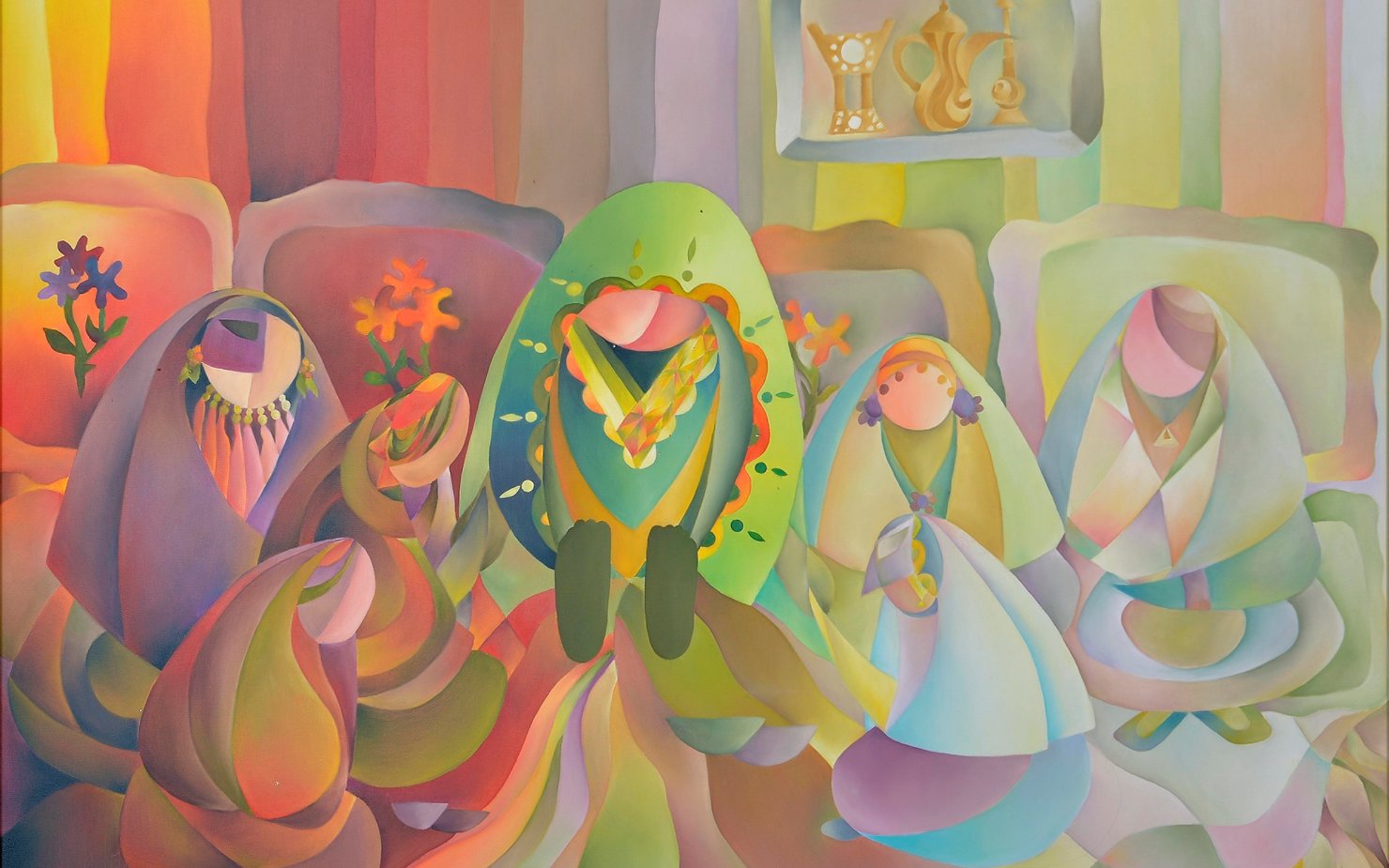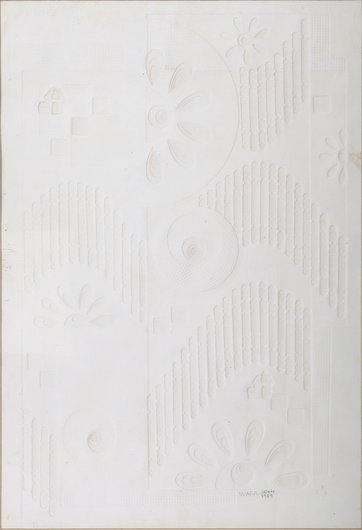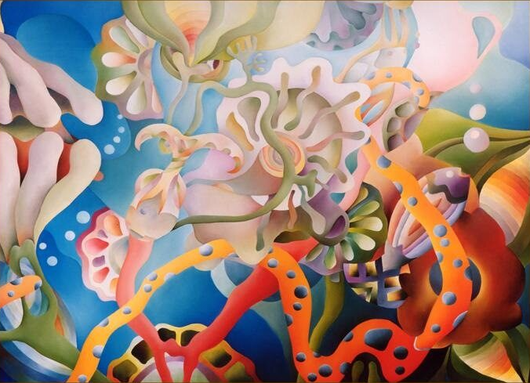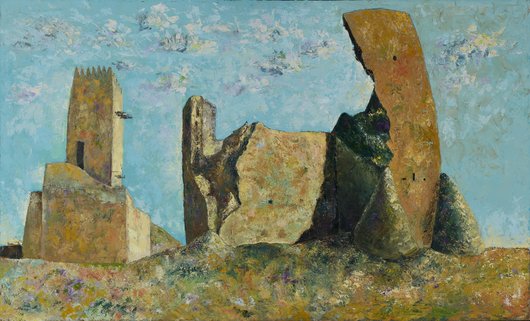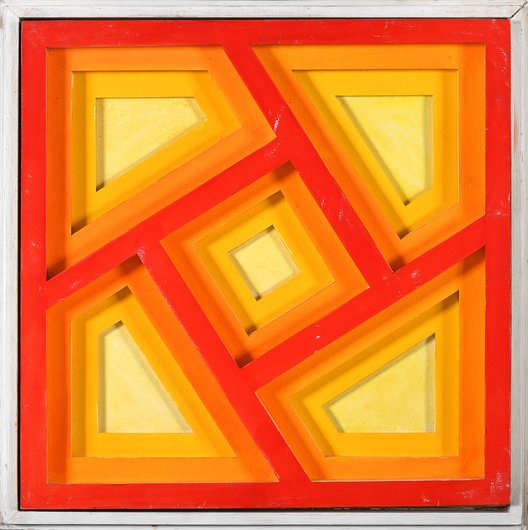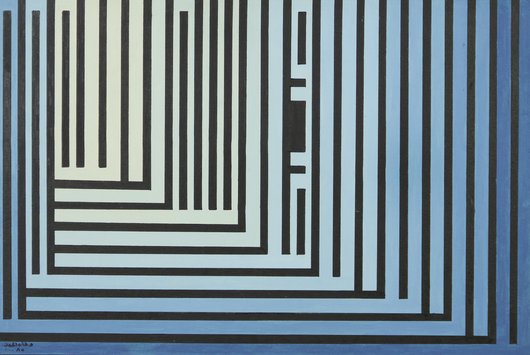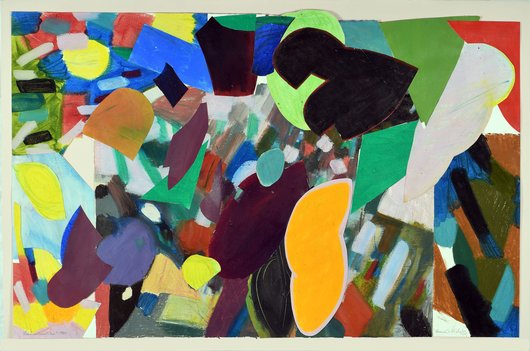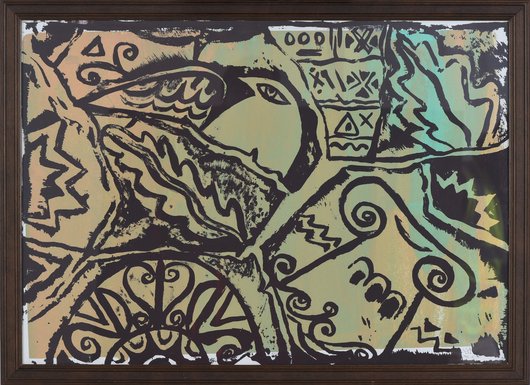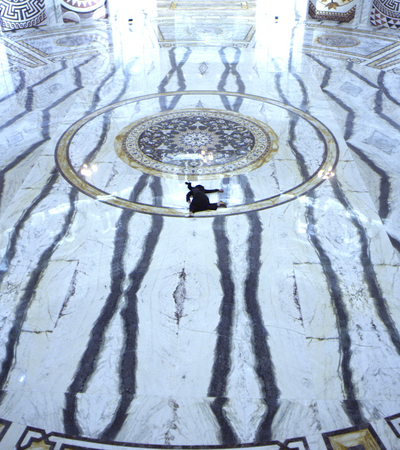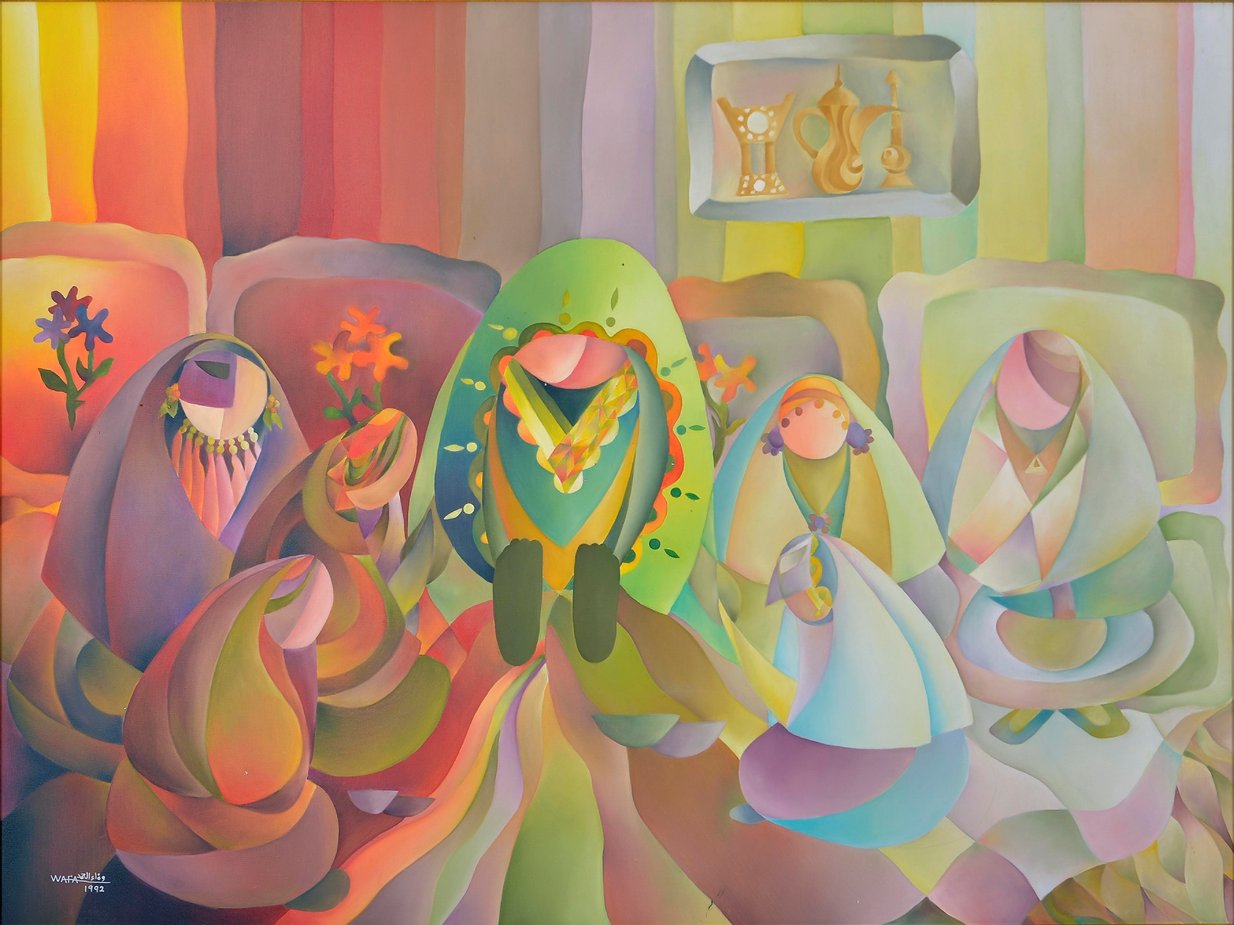About the Exhibition
Wafa al-Hamad is a Qatari artist and educator who was part of the first generation of female artists involved in Qatar's modern art scene. Her artistic journey began in the 1980s at Al-Marsam Al-Hurr (The Free Atelier), where she was part of a group of young women to study and exhibit. She went on to earn a BA in Art Education at Qatar University in 1986, becoming one of the first two women to graduate from the department. During this time, she joined the Qatar Fine Arts Association and participated in regional exhibitions. Her early training in classical realism and impressionism provided a foundation for her later exploration of abstraction and multimedia, culminating in further studies in the United States during the 1990s.
Al-Hamad’s work, often featuring dream-like optical illusions, meditative abstraction, and coral-inspired shapes, reflects a hybrid interpretation of identity, blending local and global aesthetic sensibilities. These elements create new realms where ancestral references intertwine with contemporary modes of expression. As an art educator at Qatar University, al-Hamad’s deep interest in history and tradition drove her to experiment with color theory and art technology, using them as narrative tools.
The artist’s practice offers a vibrant interpretation of Gulf modernism through abstraction, blending geometry and bold colors to express spirituality, and cultural memory. In Atlal (The Tower of Barzan) (1985), she layers a traditional landscape with textured brushstrokes and bold purple hues, setting her vision apart from her peers. This work as well as Khidaa al-Basar (Optical Illusion) (1985) bridge physical and spiritual spaces, presenting transformative views of perception. Another notable piece, Henna Night (1992), transforms a celebratory ritual into a semi-abstract scene, evoking community spirit through textured light and movement, with dreamlike figures recalling surrealism.
Spanning four decades, Sites of Imagination features 23 pieces from Mathaf’s permanent collection, including watercolors, oil paintings, woodwork, and archival materials, alongside reproductions and loans. The exhibition is divided into three thematic sections: the first celebrates al-Hamad's pioneering work with optical illusions and multimedia; the second reflects her engagement with cultural memory and ancestral traditions; while the third situates her work within Arab modernism, drawing parallels between her contributions and those of contemporaries like Samia Halaby, Balqees Fakhro, and Thuraya al-Baqsami.
Wafa al-Hamad: Sites of Imagination marks the first solo exhibition dedicated to al-Hamad, celebrating her life as a visionary artist and educator. It brings attention to her underrepresented role in the development of modern Qatari art, offering new insights into her contributions.
About the Artist
Wafa al-Hamad (1964 Doha – 2012 Heidelberg) was a pioneering Qatari artist, whose work bridged modernist abstraction, cultural memory and personal expression.The artist’s early education began at Al-Marsam Al-Hurr (The Free Atelier) in Doha (1981–1985), where she was among the first young women to participate in its activities. There, she studied under Egyptian artists Jamal Qutub and others, who influenced her early surrealist landscapes. Al-Hamad also joined the Qatar Fine Arts Association (QFAA) in the mid-1980s, participating in local and regional exhibitions. She earned a Bachelor of Arts in Art Education from Qatar University in 1986, becoming one of the first women to graduate from the department, a significant achievement that inspired future generations of women artists and educators in Qatar.
Al-Hamad pursued further studies abroad, earning a Master of Fine Arts from Eastern Michigan University in 1991 and a Ph.D. in Art Education from the University of North Texas in 1998. Her time in the U.S. deepened her exploration of color theory, geometric abstraction, and optical illusions, which would become defining features of her practice. Returning to Qatar, she taught at Qatar University from 2000 to 2011, where she mentored a new generation of artists while continuing to develop her distinctive artistic style. Her work, which integrated Islamic art, Gulf heritage, and Arabic proverbs, sought to create “portals into Gulf cultures,” integrating them as visual metaphors, exploring the interplay of tradition and modernity.
Al-Hamad’s notable exhibitions include her first solo show with the QFAA (1988, Sheraton Hotel, Doha) and Abak Min Al Madi: Wafa al-Hamad (2013, Qatar University, Doha). Regionally, she participated in the Sharjah Biennale 4 (1999, Sharjah, UAE), The 1st Arab Women Artists Exhibition (1996, Sharjah Art Foundation, Sharjah, UAE), and6 Khaleeji Women (1994, Sharjah Palace of Culture, formerly the Cultural Center, Sharjah, UAE). Her contributions to Qatari art are reflected in exhibitions like Swalif: Qatari Art Between Memory and Modernity (2014, Mathaf, Doha) andLived Forward: Art and Culture in Doha from 1960–2020 (2020, Mathaf, Doha).
Featured Artists
Thuraya al-Baqsami, Fatima al-Muhib, Samia al Said Omar, Wafika Sultan Saif al-Essa, Balqees Fakhro, Tahia Halim, Samia Halaby, Nadira Mahmoud, Rabha Mahmoud, Najat Makki, Leila Nseir, Naziha Selim, Gazbia Sirry, Latifa Toujani, Madiha Umar.
